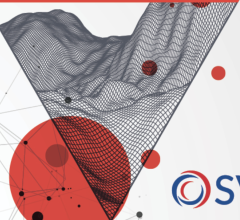
The Society of Thoracic Surgeons and the European Association for Cardiothoracic Surgeons have issued a joint statement in response to the new research on aortic valve replacement in low-risk patients announced during the Transcatheter Cardiovascular Therapeutics Conference, TCT 2023, and recently published in The Annals of Thoracic Surgery. Image courtesy: STS
October 26, 2023 — The Society of Thoracic Surgeons and the European Association for Cardiothoracic Surgeons have issued a joint statement in response to the new research on aortic valve replacement in low-risk patients announced this week at the Transcatheter Cardiovascular Therapeutics conference, TCT 2023, presented Oct. 23-26 by the Cardiovascular Research Foundation (CRF) and recently published in The Annals of Thoracic Surgery. DAIC is sharing the statement in its entirety.
The Society of Thoracic Surgeons (STS) and European Association for Cardio-Thoracic Surgery (EACTS) embrace Transcatheter Aortic Valve Implantation (TAVI) and Surgical Aortic Valve Replacement (SAVR) as outstanding therapeutic options for patients with aortic stenosis. TAVI has proven to be an excellent innovation, particularly for patients of advanced age or risk, that all surgeons and cardiologists unequivocally support through proper functioning multi-disciplinary heart teams.
STS and EACTS welcome randomized evidence in intermediate and now low-risk patients to help inform clinical decision-making. STS and EACTS approach this evidence with scheduled follow-up to 10 years from a position of scientific and clinical equipoise. Additionally, STS and EACTS advocate leveraging international trials and real-world evidence from clinical registry analyses to further inform the choice of the ideal therapy with the best long-term outcomes matched to the patient.
Recent randomized controlled trial data presented at TCT 2023 from the PARTNER 3 and Evolut Low Risk trials, and published simultaneously, provide some interesting insights. “Survival Following Surgical Aortic Valve Replacement in Low-Risk Patients: A Contemporary Trial Benchmark” was published Oct. 17 in the Annals of Thoracic Surgery.
Given the highly selected cohorts of these carefully adjudicated industry sponsored trials, we feel that some of the statements made were appropriately weighted with equipoise, but some were not.
The PARTNER 3 trial provided 5-year follow-up of the Sapien 3 TAVI valve compared to SAVR, and the Evolut Low Risk trial provided 4-year data on CoreValve TAVI compared to SAVR. Investigators of PARTNER 3 described their 5-year data to continue to support non-inferiority of TAVI based on their primary composite outcome. However, investigators of the Evolut Low Risk trial claimed their data at 4 years supported superiority of TAVI. As part of appropriate scientific discourse, STS/EACTS offer interpretive comments in response to these claims.
Following the inclusion criteria used in both of these low-risk trials, the real-world analysis of patients undergoing low risk isolated SAVR in the STS Adult Cardiac Surgery Database, showed survival was 92.9 % at 5 years and nearly 90% at 8 years. Survival was even better in patients under 75 years and in those with an STS-PROM score of less than 1%, at 95% at 8 years. The sample size was over 42,000 patients in the total cohort, with over 19,000 patients at risk for 5-year survival. These data provide the real-world benchmark from which to interpret current and future analyses in low-risk patients receiving therapy for aortic stenosis.
Given this benchmark for isolated SAVR, it is important to note that aortic valve replacement is largely an isolated procedure in transcatheter clinical practice, but up to 26% of the surgical patients in the PARTNER 3 and Evolut Low-Risk trials underwent concomitant procedures, including CABG surgery. Concomitant operations are associated with worse operative outcomes compared to isolated AVR procedures. Patients with ischemic disease are different than those with isolated valve disease. While STS and EACTS fully respect the value of randomized evidence, we feel that this is only as good as the comparator groups.
In the Evolut Low Risk Trial, there were some minor KM curve separation in follow-up, but the majority of the outcome expense of SAVR was at the initial operative procedure. With 26% of SAVR cases in this Trial undergoing concomitant operations (e.g., CABG, MV surgery, surgical ablation, and others), we feel this may hold possible significant interpretive explanation for these data. Despite these points, when taking the Evolut Low Risk trial endpoints separately, all-cause mortality, cardiovascular mortality, and disabling stroke were not statistically significant between groups. Therefore, statements of superiority of TAVI compared to a heterogeneous surgical comparator, are not appropriate at this time and may lead to unintended consequences.
Given that the fastest growing operation in the STS National Database over the last 5 years is TAVI explantation or surgery after TAVI, STS and EACTS would advise that more follow-up time be given from the existing low-risk trials prior to embracing TAVI’s clinical utility in low-risk patients. Furthermore, in order for all valve therapy specialists, including general cardiologists, interventional cardiologists, and surgeons, to compare low-risk TAVI all-cause mortality outcomes to the STS benchmark for isolated SAVR, we call on investigators from both the PARTNER 3 and Evolut Low-Risk trials to publish their results for the isolated SAVR and isolated TAVI sub-cohorts from their trial arms.
Until we have this data, any statements or conclusions from these trials are interesting but still hypothesis generating and speculative. STS and EACTS therefore recommend caution prior to adopting a TAVI-first strategy in low-risk patients, particularly those patients with characteristics not specifically studied in these low-risk trials.
More information: www.sts.org
Reference: DOI:https://doi.org/10.1016/j.athoracsur.2023.10.006
Follow DAIC for more TCT 2023 news coverage here.


 June 08, 2023
June 08, 2023 
